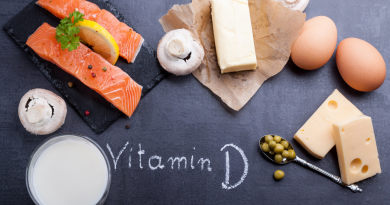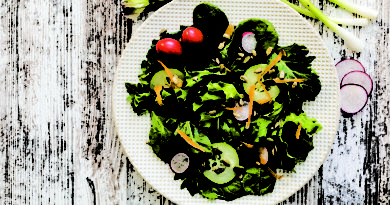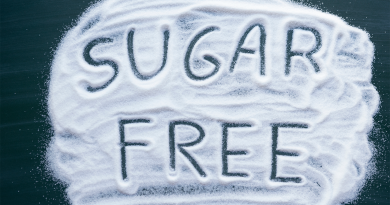Take the nutritional quiz
By Sue Pellerin, CN/CM, registered nutritionist
What do your symptoms/ailments say about you and which nutrients are you really lacking to create those symptoms? I am sure you have been told to listen to your body, but what does that really mean exactly? Your body gives you symptoms such as aches and pains, fatigue to irritability, sleep disturbances and annoying it is normal either due to stress or our age. Once again, you leave the doctor’s office in frustration, knowing deep down in your core being that there is something causing these symptoms. We take responsibility in seeing our medical practitioner only to be told that it is “stress-” or “age-” related and there is nothing you can do other than live with it or take YXZ meds…. but where does one start to put all the pieces of the puzzle together?
What if a simple deficiency in a certain vitamin or mineral be the cause of it all? Is your diet and/or daily intake of nutrients giving you the daily recommended value for the production of energy, regeneration and healing etc. Let’s run a few well-known symptoms and see if you can figure out what you are lacking in your diet. Here are a few examples of symptoms from vitamin, mineral or nutrient deficiencies and try to guess which supplement best suits such symptoms or ailments. The answers are provided following the list of symptoms.
1) Dry mouth, eyes and leathery skin; hard stools; low volume of urine, urinate frequently?
2) Rough, dry, flaky scaly skin; eczema, psoriasis, dermatitis; forgetfulness, short attention span; depression and lack of motivation
3) Infrequent bowel movements; painful, hard bowel movements; abdominal cramps, haemorrhoids, overweight
4) Indigestion or sourness 2 to 3 hours after meals; full foggy feeling after heavy meals; excessive gas, belching, burping heartburn; constipation; undigested food particles in stools
5) Indigestion, bloating after meals; intestinal gas especially after sugary foods; diarrhea or constipation; yeast infection, candidiasis
6) Brittle fingernails, vertically ridged nails; pain on forearms and biceps; cramps in calf muscle during sleep or exercise; joint pain; nervous tics or twitches; nervousness, irritability and anxiety; insomnia; heart palpitations
7) Swelling of ankles and hands; slow rapid or irregular heartbeat, palpitations; unsual thirst; muscular weakness; usually sore or still muscles after exercising; high blood pressure
8) Pale skin, palms of hands very pale; fingernails flat or concave and/or very light in color; inner side of lower eyelid is pale; lack of endurance of stamina; cravings for ice
9) Prone to athletic injuries, strained knees, elbow; loss of ligament tone or strength; muscular weakness; cracking and clicking of joints
10) Cuts and wounds sores slow to heal; hair or nails slow to grow; catch colds, flu or infections often or easily; white spots on nails; white coating on tongue; loss of appetite; sleep disturbance
11) Dry hair; brittle nails; slow mental reaction; overweight and sluggish metabolism; irritability; enlarged thyroid or goitre
12) Burning in mouth and throat; poor bone development; abnormal number of dental cavities and cracked teeth; osteoporosis, joint and bone pains; nervousness; nearsightedness and myopia
13) Sore red tongue; lemon-yellowish tint to skin; pale complexion; numbness, tingling, soreness, weakness in hands and feet; jerking of limbs; depression, anxiety, irritability and agitation; dizziness, dimmed vision; poor stomach digestion with low stomach acid; menstrual disturbance
14) Ulcers in mouth; red swollen or bleeding gums; heat palpitations, light-headedness, faintness; swelling of ankles; forgetfulness; excess pigmentation of skin; anemia
15) Bruise easily; bleed easily (gums or cuts); tiny red blood spots on skin; varicose veins, hemorrhoids; miscarriages, or threaten abortions; heavy and prolonged menstrual bleeding
Once you view some of the associated nutrients, the first reaction is “but I take that or I eat foods that are high in that”? Keep in mind that what you eat or take as a supplement may not always be metabolized and absorbed. That is a huge assumption on our part. Please consult a nutritionist for further information.
Nutritional quiz answers
Match the above number to the number below to find out the deficiency.
1. Water: You need to drink the minimum of your weight divided by two. This equals the amount of water required daily for best metabolism; drink pure, filtered water that is room temperature and never drink with meals, especially cold water.
2. Essential fatty acids: Borage, black currant, fish, flaxseed, hemp, primrose, pumpkin, safflower, sunflower, olive, soybean, coconut oil, canola, walnut are sources of essential fatty acids. Dosages depend on the type of oil that is used, usually 1 tbsp – 3 tbsp daily or 3 – 9 capsules daily.
3. Fibre: Whole grains, brown rice, agar agar, bran, fresh fruit, dried prunes and apricots, nuts, seeds, flaxseeds, psyllium, chicory, beans, lentils, raw vegetables are good sources of fibre. Soluble fibre dissolves in water. Its main medicinal function is to slow down the speed of digestion. By doing this, it stabilizes blood sugar, as well as increases the uptake of mineral and nutrients during digestion. Psyllium, apples, beans, dried apricots, and oat bran are all excellent sources of soluble fibre. These fibres help to stimulate the selective growth of “good” intestinal bacteria. Leeks, onion, garlic, asparagus, Jerusalem artichoke and chicory root are all high in inulin. Insoluble fibre, in comparison, does not dissolve in water, nor does to affect the rate of digestion. It acts to increase stool volume, thereby also stimulating normal bowel contractions. Many grains contain both soluble and insoluble fibres. Examples of some sources of insoluble fibre include wheat, corn, rice, vegetables and beans.
4. HCI: A young person with ample hydrochloric acid (HCI) may get away with unwise food combinations, because HCl neutralizes the by-products of putrefaction. The older we get, however, the less HCl our stomachs produce and the more we need to be careful how we combine our foods. It is important not to combine sugars with proteins, or sugars with fats, at the same meal. (Examples: steak and pie, orange juice and eggs.) That is because sugars are digested in the intestine. If eaten alone they pass through the stomach in minutes. Proteins and fats, however, need to stay in the stomach for 2 1/2 to 4 hours. If not, then a broad spectrum digestive aid is needed — one containing betaine hydrochloride (HCl), pepsin and papain. A formula such as this can be taken as needed with meals.
5. Probiotic: Lactic bacteria are provided in the diet by fermented foods (e.g., yogurt, kefir, cultured buttermilk, sauerkraut, pickles, olives, tempeh, miso). Lactobacillus acidophilus is the most important and most stable of the lactic bacteria in the gut. It survives in both acid and alkaline environments and has the potential to inhibit at least 26 different kinds of harmful bacteria. L. acidophilus capsules can replace beneficial intestinal flora that have been displaced or destroyed by antibiotics, candida (yeast) infections or diarrhea
6. Calcium: Salmon (with bones), sardines, seafood, dark green leafy vegetables, almonds, blackstrap molasses, brewer’s yeast, carob, dulse, figs, kelp, oats, sesame seeds, soybeans, tofu and dairy products provide calcium. Supplement range: 1000-1500 mg of elemental calcium daily. Do not exceed 2500 mg daily.
7. Potassium: Lentils, salmon, veggies like sweet potato, legumes, meat, poultry, whole grains provide sources of potassium. Supplement range: 99 mg elemental potassium daily. (Clinical doses may be higher as recommended by your practitioner.)
8. Iron: Liver, kidney, heart, red meat, dried peaches, egg yolk, oysters, nuts, beans, asparagus, oatmeal, fish, poultry. Supplement range: 18 to 22 mg. daily. Organic forms of iron (e.g., ferrous fumarate, ferrous gluconate) are non- constipating and readily utilized by the body.
9. Manganese. Nuts, green leafy vegetables, peas, beets, egg yolks, whole-grains, bananas, bran, celery, legumes, liver, pineapple. Supplement range: 15 to 22 mg. daily.
10. Zinc: Steak, lamb chops, wheat germ, brewer’s yeast, pumpkin seeds, sunflower seeds, eggs, ground mustard, liver, mushrooms, oysters, seafood, soybeans/tofu. Supplement range: 25 to 95 mg. daily. Lower levels are required for sexual maturation in males, for growth in youngsters of both sexes, and for general adult maintenance. Higher levels are required to provide specific support for the male prostate.
11) Iodine: Salt water fish, seaweeds, lima beans, soybeans, garlic, mushrooms, sesame seeds, salt. Optimum dosage 150mcg daily
12) Vit D: Sunlight, cod liver oil, egg yolks, liver, herring, sardines, salmon, tuna, organ meats. Supplementary range: 400 to 800 IU daily.
13) B 12: Clams, eggs, herring, kidney, liver, mackerel, dairy products, seafood, sea vegetables, nutritional yeast. 1000 mcg daily. May be given as an injection by a health professional.
14) Vit C: Citrus fruits, berries, green and leafy vegetables, tomatoes, cabbage, cauliflower, broccoli, potatoes, sweet potatoes, cantaloupe, green peppers, papaya. Supplementary range: 1,000 to 10,000 mg. daily.
15) Bioflavonoids – fruits, berries, vegetables, nuts, seeds, grains, legumes. Supplementary range: 100 to 440 mg. dailySue Pellerin is a Sudbury, ON-based registered nutritionist and certified microscopist.




